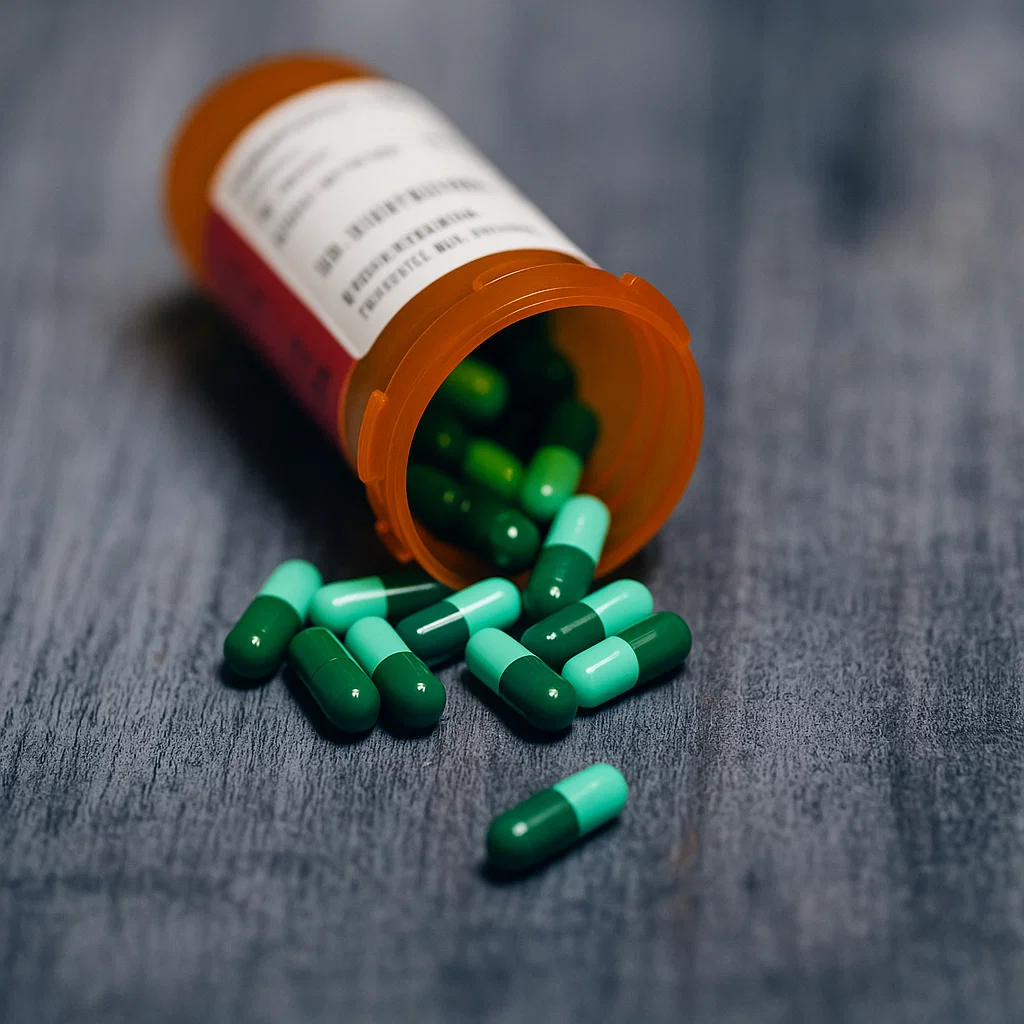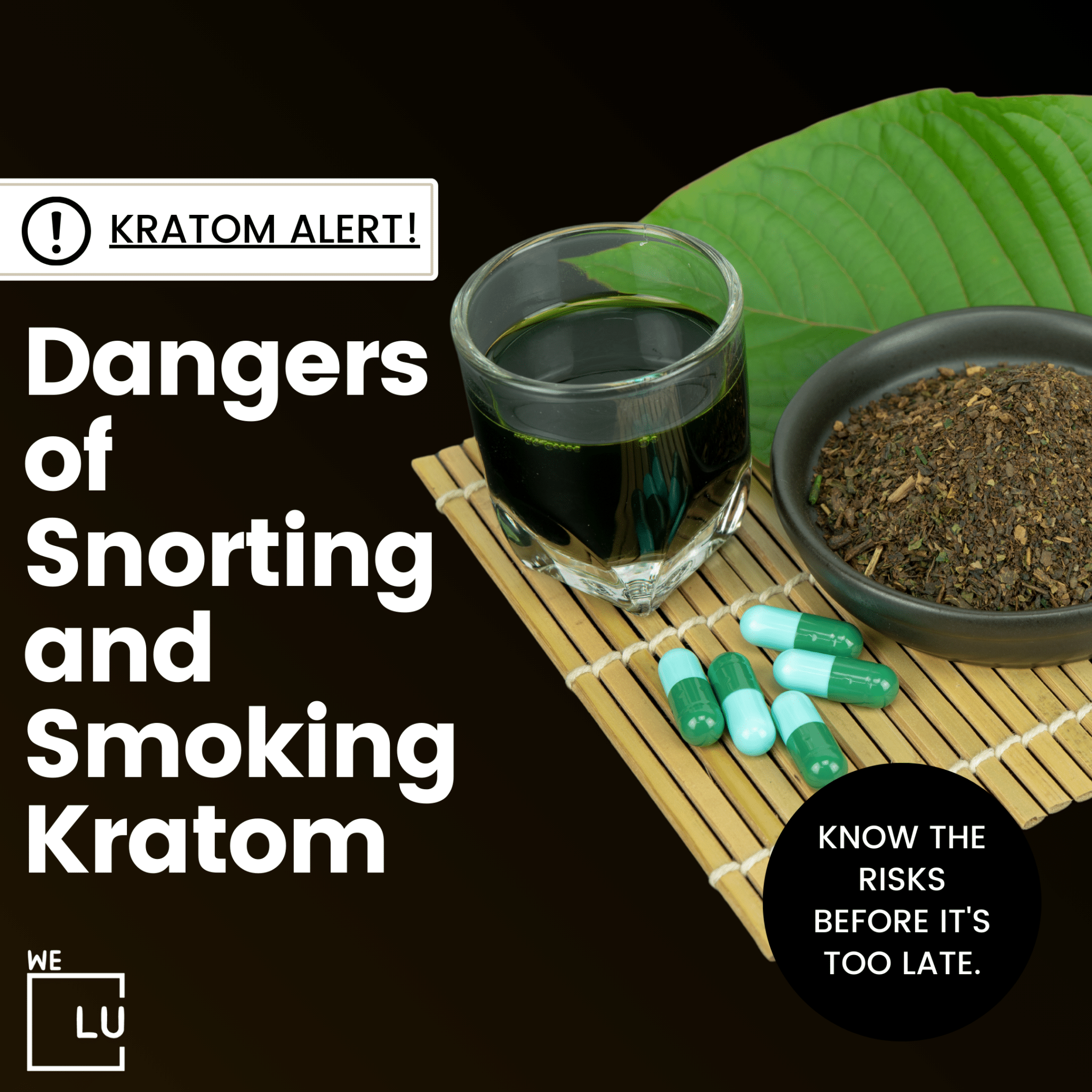What Is Oxycodone?
Oxycodone is a potent opioid analgesic medication prescribed for the relief of moderate to severe pain. It binds to specific brain and spinal cord receptors, reducing pain perception. Oxycodone is available in various formulations, often combined with other medications such as acetaminophen or aspirin. It is classified as a Schedule II controlled substance due to its potential for abuse and dependence. Common brand names for oxycodone-containing medications include OxyContin and Percocet.
This medication is utilized across a range of contexts, including post-surgical recovery, injury-related pain, and the treatment of chronic pain conditions such as cancer-related or severe arthritis pain. In instances where continuous pain relief is necessary, extended-release formulations like OxyContin may be prescribed, offering around-the-clock pain control.
Additionally, oxycodone may be employed in palliative care, providing comfort to individuals with terminal illnesses. While oxycodone can significantly alleviate pain when used appropriately, its prescription and dosage must be carefully determined by healthcare professionals to mitigate the risk of adverse effects, dependence, and addiction. Patients are advised to adhere to prescribed dosages and promptly communicate concerns or side effects to their healthcare providers.
Oxycodone Dosage
What Is The Normal Dosage For Oxycodone?
The appropriate dosage of oxycodone depends on various factors, including the patient’s individual needs, the severity of pain, and their response to the medication. Dosages are typically tailored by healthcare professionals based on a careful assessment of the patient’s condition. Oxycodone is available in various formulations, including immediate-release and extended-release forms.
For immediate-release oxycodone, the usual starting dose for adults is 5 to 15 mg every 4 to 6 hours as needed for pain. The dosage may be adjusted based on the individual’s response and the severity of the pain.
Extended-release oxycodone, such as OxyContin, is often prescribed at a lower frequency, such as every 12 hours, due to its sustained-release properties. The initial dosage for OxyContin is generally lower than the total daily dose of immediate-release oxycodone, as it provides prolonged pain relief.
| Type of Oxycodone | Dosage (Immediate-Release) |
|---|---|
| Immediate-Release | 5 to 15 mg every 4 to 6 hours as needed for pain. Dosage may be adjusted based on individual response and pain severity. |
| Extended-Release (e.g., OxyContin) | Usually prescribed every 12 hours. Initial dosage is generally lower than the total daily dose of immediate-release oxycodone. Dosage adjustments may be made based on individual response. Common starting doses might include 10 mg, 20 mg, or 40 mg every 12 hours. |
What Is The Max Oxycodone Dose?
The maximum dose of oxycodone is not a one-size-fits-all value and can vary based on factors such as the patient’s individual response, tolerance, and overall health. Healthcare providers carefully assess each patient’s needs and adjust the dosage accordingly. Additionally, the formulation of oxycodone (immediate-release or extended-release) and whether it is combined with other medications can impact the maximum allowable dose.
For immediate-release oxycodone, the typical maximum daily dose for adults is often around 360 mg, but it can be lower depending on the individual patient’s circumstances.
For extended-release oxycodone, such as OxyContin, the maximum dose is generally lower due to the sustained-release nature of the medication. High doses of extended-release opioids can lead to serious health risks, including overdose and respiratory depression. Patients should not exceed the prescribed dosage and promptly communicate with their healthcare provider if they experience any concerns or side effects.
The maximum dose is a guideline, and individual variations exist. Patients should always follow the specific instructions provided by their healthcare provider and report any issues promptly. Misuse of opioids, including exceeding prescribed doses, can lead to severe health consequences.
Oxycodone Lethal Dose
Oxycodone, like other opioids, can cause respiratory depression, sedation, and other adverse effects, especially in high doses. The risk of a lethal overdose increases when individuals misuse the medication, take it inappropriately, or combine it with other substances, such as alcohol or other central nervous system depressants.
The specific lethal dose of oxycodone varies from person to person and is influenced by factors such as individual tolerance, health status, and whether the person has developed a dependence on opioids. Taking too much oxycodone can lead to life-threatening complications, including respiratory failure.
Oxycodone Dose Adjustment
Oxycodone dosage adjustments are typically made by healthcare professionals based on a careful assessment of the individual patient’s response to the medication, the severity of pain, and any potential side effects. Dosage adjustments may be necessary to optimize pain relief while minimizing the risk of adverse effects and complications. Here are some common scenarios that might lead to dosage adjustments:
- Inadequate Pain Relief: If a patient is not experiencing adequate pain relief with the current dosage, a healthcare provider may adjust the dose upward. This adjustment is typically done in a controlled manner to avoid potential side effects.
- Side Effects: If a patient experiences significant side effects, such as nausea, dizziness, or respiratory depression, the healthcare provider may consider lowering the dosage or adjusting the dosing schedule to better manage these effects.
- Tolerance: Over time, some patients may develop tolerance to the analgesic effects of oxycodone, requiring higher doses to achieve the same level of pain relief. Healthcare providers may adjust the dosage accordingly while closely monitoring for signs of opioid tolerance.
- Switching Formulations: Patients may be switched between immediate-release and extended-release formulations based on their pain management needs. For example, a healthcare provider might transition a patient from immediate-release oxycodone to an extended-release formulation for around-the-clock pain control.
- Changing Clinical Conditions: Changes in a patient’s medical condition, such as surgery, trauma, or the development of new health issues, may necessitate adjustments to the oxycodone dosage.
It’s crucial for patients to communicate openly with their healthcare providers about their pain levels, any side effects, or changes in their health status. Self-adjustment of oxycodone dosage without professional guidance can lead to serious health risks, including overdose and addiction. Patients should always follow their healthcare provider’s instructions and promptly report any concerns or issues related to their medication.

Skip To:
Learn More:
- Oxycodone Vs Oxycontin. What Is The Difference And Similarities?
- Oxycodone and Hydrocodone, Side Effects, Forms, Dosages, Differences & Interactions
- How Long Does Oxycodone Stay In Your System?
- How long do opiates stay in your system? Specifics, Addiction, Drug Processing & Treatment
- Opiate Withdrawal, Effects, Causes, Symptoms, Diagnosis, Complications, Detox & Treatments
- How Long Does Oxycodone Take To Work? Timeline and Factors.
- Oxycodone Withdrawal Symptoms, Timeline, and Detox
- Does Oxycodone Make You Sleepy? Oxycodone Effects On Sleep
- Oxycodone Side Effects, Uses, Interactions, Addiction Facts

Get Your Life Back
Find Hope & Recovery. Get Safe Comfortable Detox, Addiction Rehab & Dual Diagnosis High-Quality Care.
Hotline (855) 695-1160
Oxycodone Side Effects
Oxycodone is a powerful opioid pain medication used to manage moderate to severe pain. Like all medications, oxycodone can have side effects. It’s important to note that not everyone will experience these side effects, and their severity can vary.
Common side effects of oxycodone include:
- Nausea and Vomiting: Many people may experience nausea when taking oxycodone. This side effect can sometimes be mitigated by taking the medication with food.
- Constipation: Opioids, including oxycodone, can slow down the digestive system, leading to constipation. Adequate fluid intake, dietary fiber, and regular exercise can help alleviate this side effect.
- Dizziness or Lightheadedness: Oxycodone can cause drowsiness, dizziness, or lightheadedness. It’s essential to avoid activities that require alertness, such as driving or operating heavy machinery, until you know how the medication affects you.
- Drowsiness: Many opioids, including oxycodone, can cause drowsiness. This effect may be more pronounced when combined with other medications or substances that have a soothing effect.
- Itching: Some individuals may experience itching or a rash as a side effect of oxycodone. If severe, this should be reported to a healthcare provider.
- Dry Mouth: Opioids can cause dry mouth, which may contribute to dental issues. Staying hydrated and practicing good oral hygiene can help alleviate this symptom.
- Sweating: Excessive sweating or flushing may occur in some individuals taking oxycodone.
- Headache: Headaches can be a side effect of oxycodone use.
Severe Side Effects Of Oxycodone
- Difficulty Breathing: Opioids can depress the respiratory system, and severe respiratory depression can be life-threatening.
- Chest Pain or Discomfort: This could be a sign of a serious heart-related issue.
- Severe Dizziness or Fainting: This may indicate low blood pressure.
- Seizures: While rare, some individuals may experience seizures.
- Allergic Reactions: Symptoms can include rash, itching, swelling, severe dizziness, or difficulty breathing.
Use oxycodone only as prescribed by a healthcare professional and communicate any concerning symptoms to your healthcare provider promptly. Misuse of opioids can lead to addiction, overdose, and other serious health consequences.
Get Help. Get Better. Get Your Life Back.
Searching for an Accredited Drug and Alcohol Rehab Centers in Near You?
Even if you have failed previously and relapsed, or are in the middle of a difficult crisis, we stand ready to support you. Our trusted behavioral health specialists will not give up on you. When you feel ready or just want someone to speak to about therapy alternatives to change your life call us. Even if we cannot assist you, we will lead you to wherever you can get support. There is no obligation. Call our hotline today.
FREE Addiction Hotline – Call 24/7Oxycodone Uses
Oxycodone is an opioid analgesic, which means its primary use is for the management of moderate to severe pain. It binds to specific receptors in the brain and spinal cord, altering pain perception. Here are common uses of oxycodone:
- Pain Management: Oxycodone is prescribed for various types of pain, including post-surgical pain, injury-related pain, and chronic pain conditions such as cancer-related pain or severe arthritis.
- Chronic Pain Conditions: It may be used for long-term pain management in individuals who require continuous relief, especially when other pain medications are insufficient.
- Terminal Illness: Oxycodone is often employed in palliative care for individuals with terminal illnesses, providing comfort and pain relief in end-of-life care.
- Opioid Tolerance: In cases where patients have developed a tolerance to other opioids, oxycodone might be considered as an alternative for pain management.
- Extended-Release Formulations (e.g., OxyContin): Extended-release oxycodone formulations are designed to provide prolonged pain relief and may be prescribed for around-the-clock pain control.
Oxycodone is a potent medication and has the potential for abuse, addiction, and other serious side effects. Healthcare providers carefully assess a patient’s medical history, pain severity, and risk factors before prescribing oxycodone. Patients should follow their healthcare provider’s instructions, use the medication only as prescribed, and report any concerns or side effects promptly.

Comfortable Facilities & Amenities
High-Quality Addiction & Mental Health Rehabilitation Treatment
Rehab Centers TourRenowned California Addiction Center. Serene Private Facilities. Inpatient rehab programs vary.
Addiction Helpline (855) 695-1160Proven recovery success experience, backed by a Team w/ History of:
15+
Years of Unified Experience
100s
5-Star Reviews Across Our Centers
10K
Recovery Success Stories Across Our Network
- Low Patient to Therapist Ratio
- Onsite Medical Detox Center
- Comprehensive Dual-Diagnosis Treatment
- Complimentary Family & Alumni Programs
- Coaching, Recovery & Personal Development Events

Oxycodone Overdose
An oxycodone overdose occurs when someone takes more of the medication than their body can safely process, leading to potentially life-threatening symptoms. Here are some signs and symptoms of an oxycodone overdose:
- Respiratory Depression: This is a critical symptom of opioid overdose. The person may have slow, shallow, or difficulty breathing. In severe cases, respiratory failure can occur.
- Extreme Drowsiness or Unconsciousness: Individuals experiencing an oxycodone overdose may be extremely drowsy, difficult to awaken, or may lose consciousness.
- Pinpoint Pupils: Oxycodone overdose can cause the pupils of the eyes to become very small (pinpoint pupils).
- Cold or Clammy Skin: Skin that feels cold or clammy to the touch may indicate an overdose.
- Weakness or Floppiness: Overdose can cause weakness or limpness in the muscles.
- Cyanosis: Bluish or purplish tint to the lips or fingernails due to lack of oxygen.
If you suspect someone is experiencing an oxycodone overdose, it is crucial to seek emergency medical attention immediately. Call emergency services (such as 911 in the United States) and provide them with information about the situation, including the individual’s symptoms, the amount of oxycodone taken (if known), and any other relevant details.
Naloxone, an opioid antagonist, can be administered to reverse the effects of opioid overdose and restore normal breathing. In many places, naloxone is available without a prescription and is used in emergencies.
Overdosing on oxycodone can be fatal if not treated promptly. Always take opioids as prescribed by a healthcare professional, and if you have concerns about your medication or if you suspect an overdose, seek immediate medical help.
World-class, Accredited, 5-Star Reviewed, Effective Addiction & Mental Health Programs. Complete Behavioral Health Inpatient Rehab, Detox plus Co-occuring Disorders Therapy.
CALL (855) 695-1160End the Addiction Pain. End the Emotional Rollercoaster. Get Your Life Back. Start Drug, Alcohol & Dual Diagnosis Mental Health Treatment Now. Get Free No-obligation Guidance by Substance Abuse Specialists Who Understand Addiction & Mental Health Recovery & Know How to Help.
Oxycodone Addiction
Oxycodone, like other opioids, has the potential for addiction. Addiction is a complex condition characterized by the compulsive use of a substance despite harmful consequences. Oxycodone addiction can develop when the medication is not used as prescribed, leading to misuse, dependence, and an overwhelming urge to continue using it.
- Risk Factors:
- Prolonged Use: Long-term or high-dose use of oxycodone increases the risk of developing dependence and addiction.
- Personal or Family History: Individuals with a history of substance abuse or addiction, or those with a family history of addiction, may be at a higher risk.
- Signs and Symptoms of Oxycodone Addiction:
- Compulsive Drug Seeking: Individuals may engage in persistent efforts to obtain oxycodone, even when it is no longer medically necessary.
- Loss of Control: The inability to control or limit drug use, despite knowing the risks and negative consequences.
- Craving: Intense cravings or a strong desire to use oxycodone.
- Tolerance: Needing higher doses over time to achieve the same effects.
- Withdrawal Symptoms: Experiencing withdrawal symptoms (such as nausea, sweating, anxiety, and insomnia) when not using the drug.
- Physical and Psychological Dependence:
- Physical Dependence: The body adapts to the presence of oxycodone, and withdrawal symptoms occur when the drug is reduced or discontinued.
- Psychological Dependence: A strong emotional or psychological reliance on oxycodone for coping with stress or negative emotions.
- Health Consequences:
- Respiratory Depression: High doses of oxycodone can lead to respiratory depression, which is a slowing or stopping of breathing and can be life-threatening.
- Overdose: Misuse or abuse of oxycodone increases the risk of overdose, which can be fatal.
- Social and Occupational Impairment: Addiction can lead to difficulties in relationships, employment, and daily functioning.
- Treatment Options:
- Detoxification: Medically supervised detoxification may be necessary to manage withdrawal symptoms safely.
- Rehabilitation Programs: Inpatient or outpatient rehabilitation programs can provide counseling, therapy, and support to address the psychological aspects of addiction.
- Medication-Assisted Treatment (MAT): Some individuals may benefit from medications like methadone or buprenorphine to help manage cravings and withdrawal symptoms.
- Prevention:
- Use as Prescribed: Taking oxycodone only as prescribed by a healthcare professional reduces the risk of addiction.
- Regular Monitoring: Healthcare providers should monitor patients on opioid therapy regularly and adjust treatment plans as needed.
Seek help if you suspect you or someone you know is struggling with oxycodone addiction. Treatment and support from healthcare professionals, addiction specialists, and support groups can make a significant difference in recovery. If you have concerns about oxycodone use, consult with your healthcare provider for guidance and assistance.
Experience Transformative Recovery at the We Level Up California Treatment Center.
See our authentic success stories. Get inspired. Get the help you deserve.



Start a New Life
Begin with a free call to an addiction & behavioral health treatment advisor. Learn more about our dual-diagnosis programs. The We Level Up treatment center network delivers recovery programs that vary by each treatment facility. Call to learn more.
- Personalized Care
- Caring Accountable Staff
- World-class Amenities
- Licensed & Accredited
- Renowned w/ 100s 5-Star Reviews
We’ll Call You
“Horrific Opiates Heroin Addiction Led to Prison. My Life was a Wreck” to a Beautiful Sober Life…
Search We Level Up CA Oxycodone Dosage, Drug & Alcohol Rehab / Detox & Mental Health Topics & Resources
Sources
- US Equal Employment Opportunity Commission (EEOC) – Use of Codeine, Oxycodone, and Other Opioids: Information for Employees – https://www.eeoc.gov/laws/guidance/use-codeine-oxycodone-and-other-opioids-information-employees Read More: Doses For Oxycodone, Oxycodone Doses, Max Dosage Of Oxycodone, Max Oxycodone Dosage, Max Dose Oxycodone, Oxycodone Max Dose, Highest Dose Of Oxycodone, Normal Dosage For Oxycodone, Lethal Dose Of Oxycodone,
- Drug Enforcement Administration. “Oxycodone.” April 2020.
- DEA – Oxycodone – https://www.dea.gov/factsheets/oxycodone
- MedLine Plus – Oxycodone – https://medlineplus.gov/druginfo/meds/a682132.html
- FDA – Oxycontin Label – https://www.accessdata.fda.gov/drugsatfda_docs/label/2008/020553s059lbl.pdf
- Opioid addiction – U.S. National Library of Medicine (medlineplus.gov)
- Sadiq NM, Dice TJ, Mead T. Oxycodone. In: StatPearls [Internet]. Treasure Island (FL): StatPearls Publishing; 2023 Jan-. Available from: https://www.ncbi.nlm.nih.gov/books/NBK482226/ Read More: Doses For Oxycodone, Oxycodone Doses, Max Dosage Of Oxycodone, Max Oxycodone Dosage, Max Dose Oxycodone, Oxycodone Max Dose, Highest Dose Of Oxycodone, Normal Dosage For Oxycodone, Lethal Dose Of Oxycodone,
- Cohen B, Ruth LJ, Preuss CV. Opioid Analgesics. [Updated 2023 Apr 29]. In: StatPearls [Internet]. Treasure Island (FL): StatPearls Publishing; 2023 Jan-. Available from: https://www.ncbi.nlm.nih.gov/books/NBK459161/
- Chou R, Hartung D, Turner J, et al. Opioid Treatments for Chronic Pain [Internet]. Rockville (MD): Agency for Healthcare Research and Quality (US); 2020 Apr. (Comparative Effectiveness Review, No. 229.) Available from: https://www.ncbi.nlm.nih.gov/books/NBK556253/
- National Academies of Sciences, Engineering, and Medicine; Health and Medicine Division; Board on Health Sciences Policy; Committee on Pain Management and Regulatory Strategies to Address Prescription Opioid Abuse; Phillips JK, Ford MA, Bonnie RJ, editors. Pain Management and the Opioid Epidemic: Balancing Societal and Individual Benefits and Risks of Prescription Opioid Use. Washington (DC): National Academies Press (US); 2017 Jul 13. Available from: https://www.ncbi.nlm.nih.gov/books/NBK458660/ doi: 10.17226/24781
- Zullo AR, Danko KJ, Moyo P, et al. Prevention, Diagnosis, and Management of Opioids, Opioid Misuse, and Opioid Use Disorder in Older Adults [Internet]. Rockville (MD): Agency for Healthcare Research and Quality (US); 2020 Nov. (Technical Brief, No. 37.) Available from: https://www.ncbi.nlm.nih.gov/books/NBK564144/




